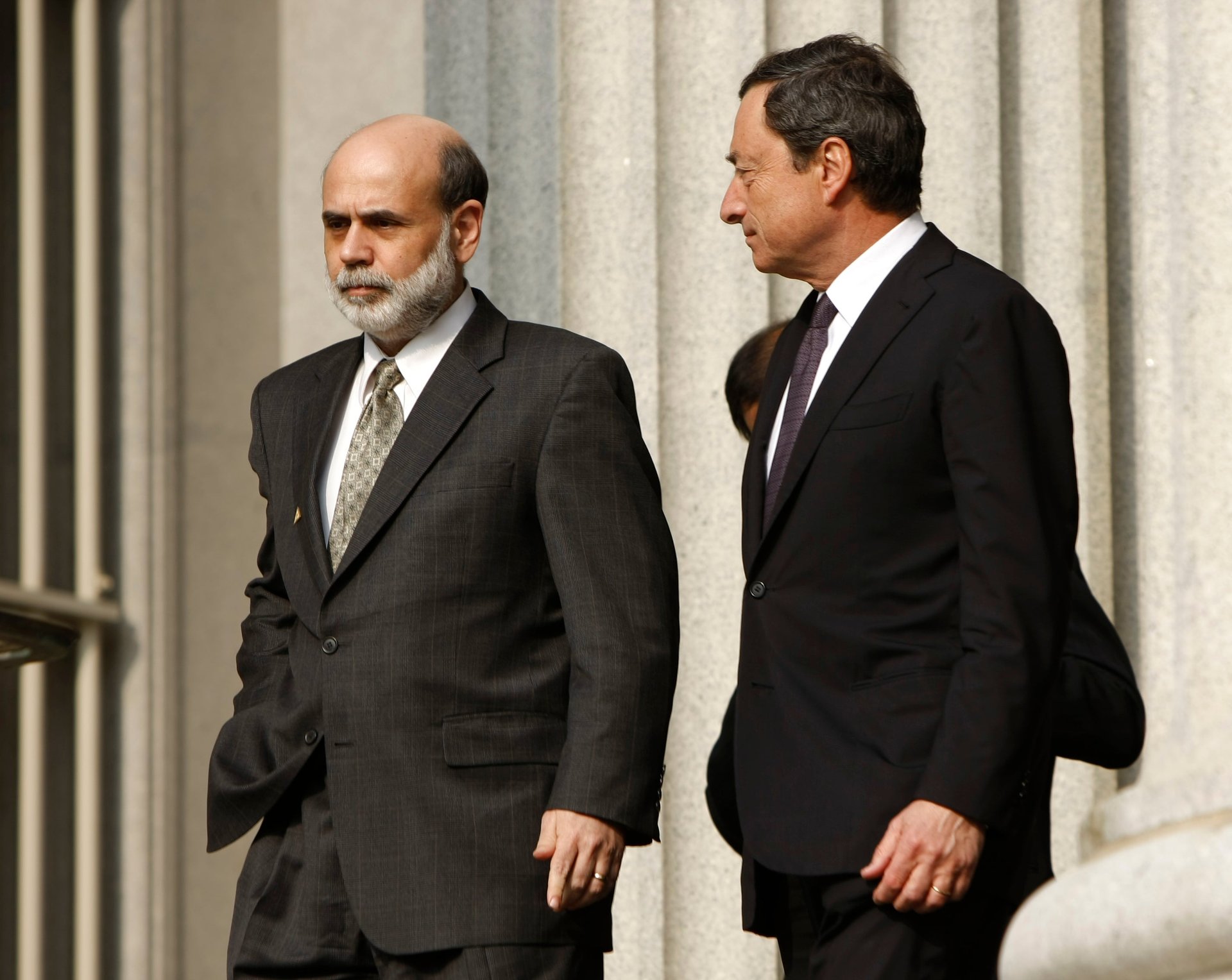If you take out Apple and central banks, the S&P 500 is only up 4% this year
It’s a great year for investors in the S&P 500 and some of its component US shares, as the index is trading up more than 16% since the start of 2012. But a look behind the numbers shows that central bank decisions rather than great corporate fundamentals appear to be triggering the upward surge.

It’s a great year for investors in the S&P 500 and some of its component US shares, as the index is trading up more than 16% since the start of 2012. But a look behind the numbers shows that central bank decisions rather than great corporate fundamentals appear to be triggering the upward surge.
J.P. Morgan analysts led by Adam Crisafulli in a report today show that S&P 500 returns in 2012 would be modest if you altered a few key factors. Removing the run-ups directly linked to activity by the US Federal Reserve and the European Central Bank (ECB), and factoring out Apple’s stock (AAPL) gain of 58%, the S&P 500 is up just 4% this year. They write:
Up just 4% YTD? If you strip out the market’s big “central bank” days (+22 pts on 7/26 “bumblebee”, +26 pts on 7/27 bumblebee follow-through, +26 pts on 8/3 delayed reaction to ECB mtng, +29 pts after 9/6 ECB mtng, and +23 pts after 9/13 Fed meeting) and adjust for AAPL’s contribution (25 pts), the S&P is up 4% YTD. So basically unless Draghi or Bernanke were screaming at you, you didn’t buy stocks and when you did it was just AAPL.
(The bumblebee reference above comes from a July 26 speech where ECB President Mario Draghi famously promised the ECB would “do whatever it takes to preserve the euro.” In the speech he also said, “The euro is like a bumblebee…it shouldn’t fly but instead it does.”)
We dug a little deeper into these numbers, essentially by looking at a few more moves in the index that occurred before July. The S&P 500 has only risen more than 20 points (adjusted for dividends and splits) on 10 days this year. JP Morgan mentions five. Three more could also be attributed to central bank action: The index rose 25 points on March 13, after the Fed’s Open Market Committee (FOMC) released a statement detailing a more upbeat view of the US economy. The index rose 30 points on June 6 after ECB President Mario Draghi talked of renewed financial risks and called on EU leaders to act. Finally, the S&P rose 33 points on June 29, just days before a highly anticipated FOMC meeting. So, adjusted for Apple and central banks, the S&P 500 has actually fallen over the last year.